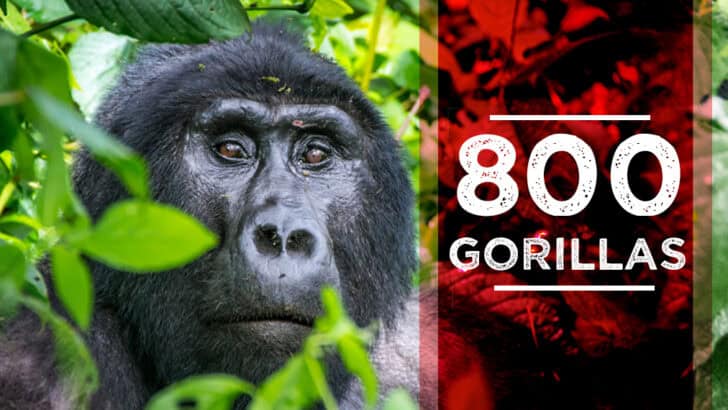That’s it. There are no more. The last living mountain gorillas spend their days in the densely forested mountain range that is shared by Uganda, Rwanda, and the Congo.
Through human population growth and poaching, the numbers of the mountain gorillas have dwindled to just 800. We got a chance to get up close to one family as part of our African safari with Acacia Africa.
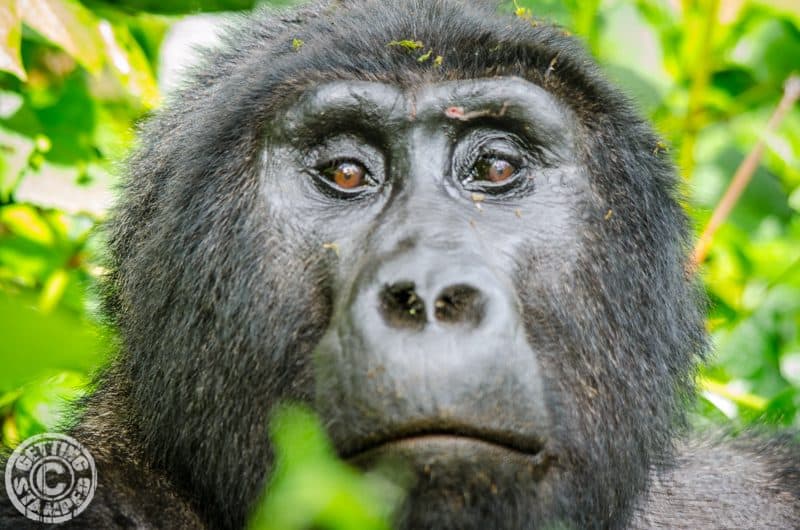
We visited the gorillas in the beautiful country of Uganda. This part of Africa is the image most people get when they think of the continent. Uganda is lush, bright green plants cover the red soil and the skies are a deep blue with crisp white clouds.
As we approached the western edge of Uganda the terrain became very hilly and the roads windy. The hills looked like a patchwork quilt of different shades of green with small plots of tea, vegetables, and coffee. The most striking feature was the morning mist. The dampness of the night would spill over into the morning and cover the hills in a blanket of white mist.
After visiting there is no wonder where they came up with the name for the movie Gorillas in the mist.
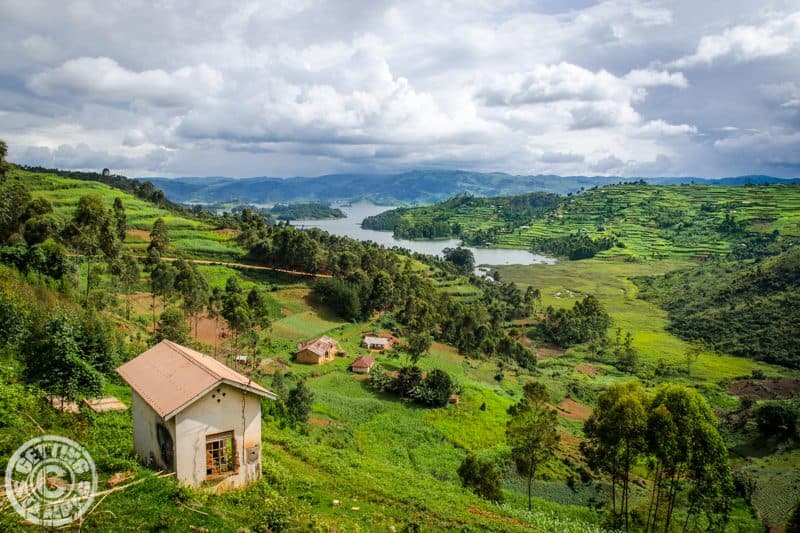
In the morning, we woke up early to trek to find the gorillas was no different. The mist hovered over the rainforest until the sun was high enough to cut through the dampness. As the sun was warming the hills we met with our guides from the Ugandan Wildlife Authority (UWA).
The rangers gave us a briefing before heading into the forest. The gorillas we trekked with are wild, not in any enclosure, wild roaming the expansive national park.
Permits for trekking with the mountain gorillas are done by a lottery system. Families of mountain gorillas are rotated to restrict how much human interaction they have. The family of Gorillas we drew lives in a part of the park called the impenetrable forest.
The dense rainforest was lush and green with narrow paths cut into it. Above the treetops, the sky was grey from the mist hanging above our heads.
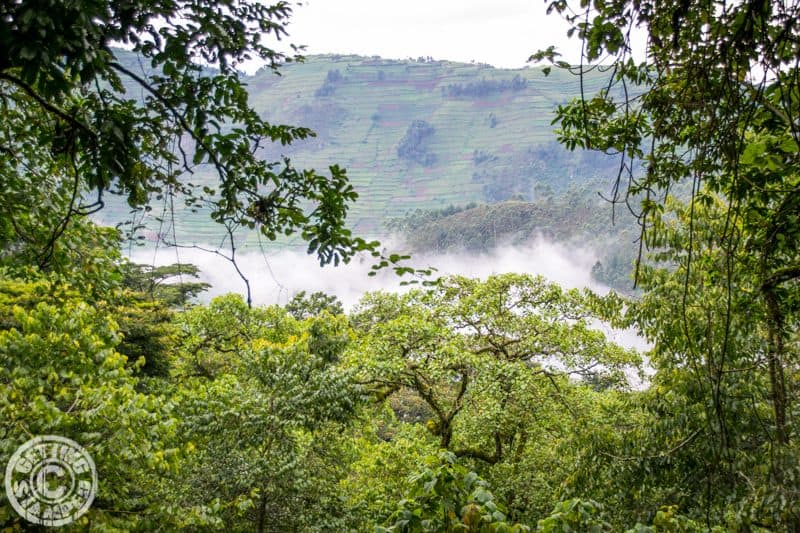
Naturally, the gorillas aren’t too keen on having visitors into their life. However, the UWA have gone through a process with a few of the families of gorillas called habituating. The UWA selected a few families for us, humans, to trek with.
Through regimented visits with the gorillas, they have become used to seeing people. Now when these habituated gorillas are visited they longer react negatively.
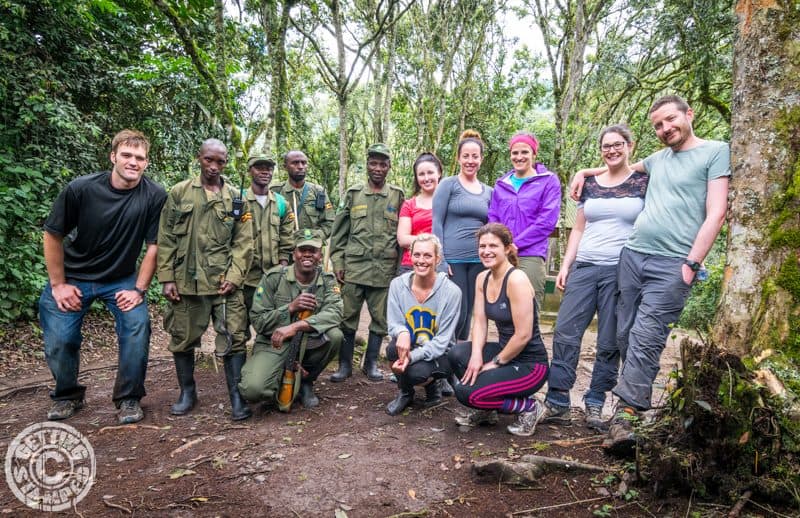
The process of habituating begins with daily visits to the family. A group of rangers visits the family at the exact same time with the exact same group of people for several months. In the first months, the gorillas charge the visitors regularly.
After the first stages, they begin to introduce new people and vary the times until the gorillas are relatively used to people. In some cases, it can take many months or even years to habituate the family.
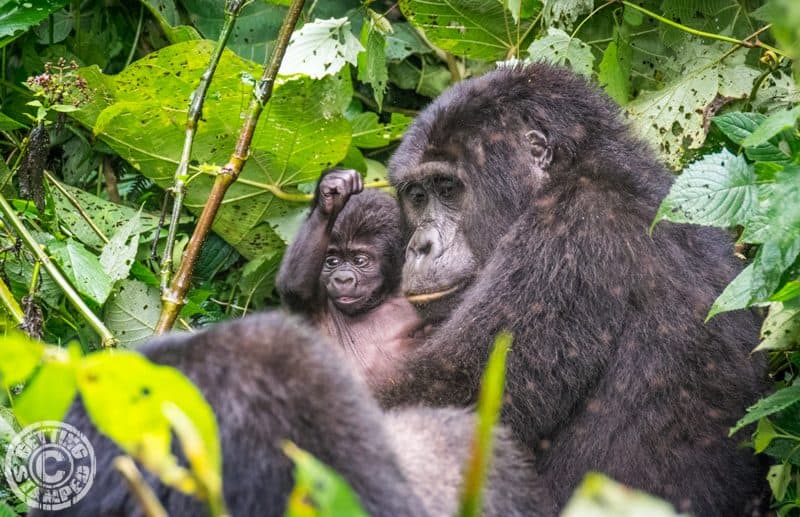
After our briefing, it was time to hit the trails to search out the gorillas. Since they are wild they move to different parts of the forest every day. The guides start by looking for the nest they made from the night before.
The gorillas make a nest by trampling down vegetation in a spot and it’s the best indicator of how close they might be. After an hour and a half of trekking through the rainforest, we came upon the nest so we knew we were close.
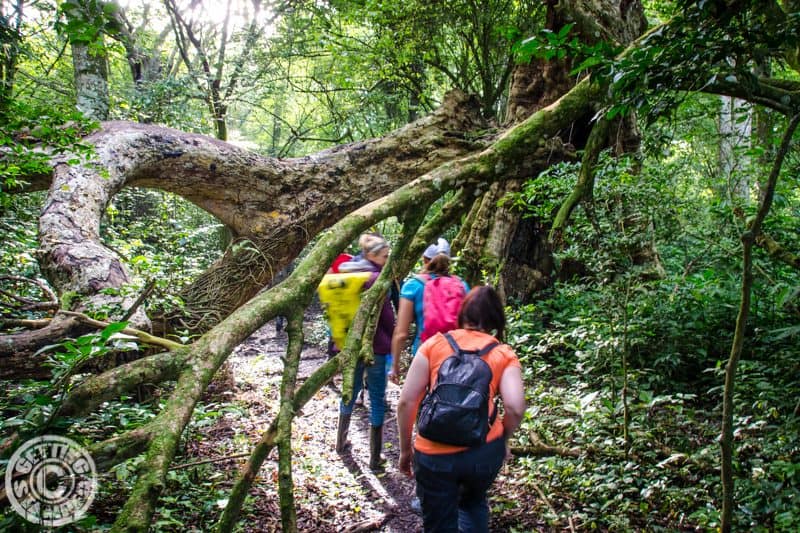
From there it was all off-road. There are a few main trails that took us close to the area where they might be. Once we were close we had to cut our own trails with the guides hacking a path with machetes.
We slowly made our way through the rainforest and about a half an hour off the main trail we found them. A large male silverback mountain gorilla and a few minutes later he was joined by a female and her baby.
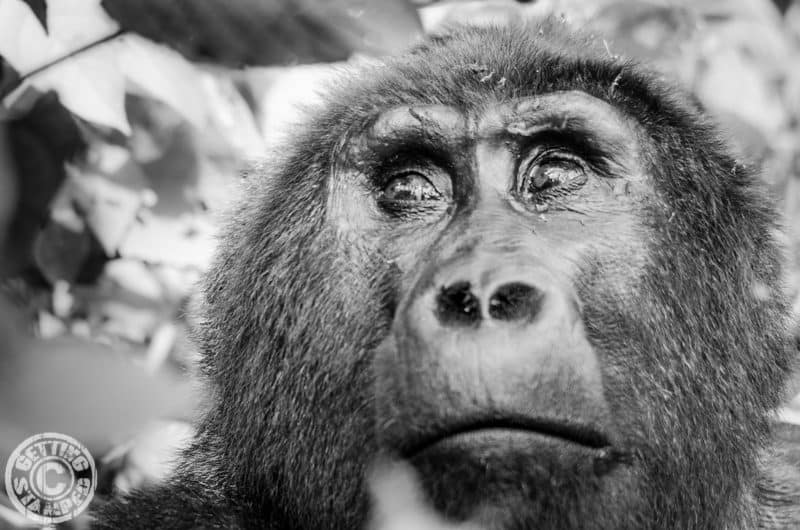
Part of the conservation activities only allowed us just an hour with the family once we found them. The one-hour limit is imposed for the gorilla’s well-being. This prevents them from changing their behavior through too much interaction and also to keep them healthy. We as humans carry sicknesses and diseases that can be spread to the gorillas and make them ill.
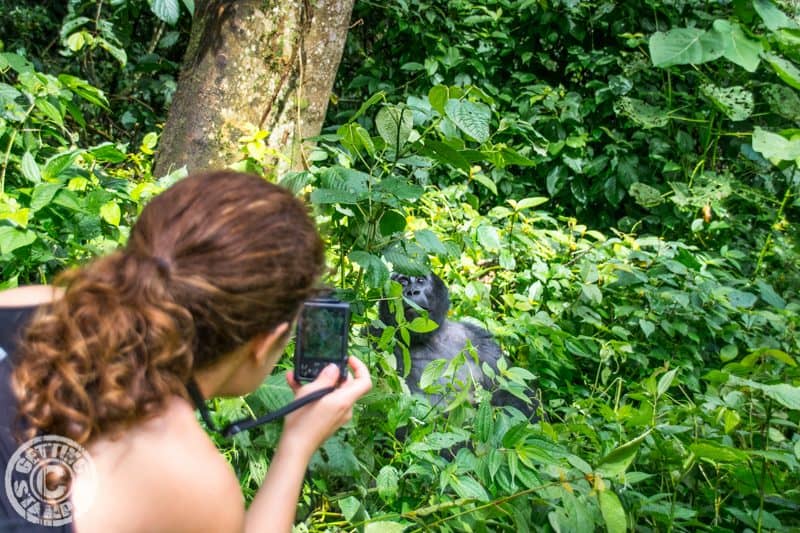
Short but sweet. It was an amazing time spent with a few of the last mountain gorillas left on earth. It was a trip of a lifetime and a highlight of our entire overland safari. Hopefully through the conservation efforts of Uganda and it’s neighbors Rwanda and Congo the gorillas will be around for future generations. Our trekking permits go directly to supporting these efforts in Uganda and educating the community on conservation.
If you are looking at taking a safari on your own, we cannot recommend Acacia Africa enough.
